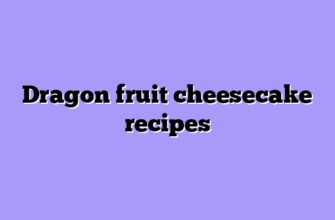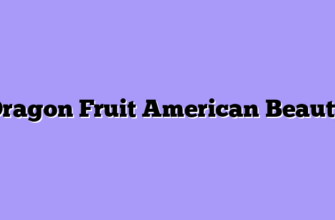You know that moment when two ingredients come together and create something so magical that it changes how you think about food? That’s exactly what happened when I first combined lemon myrtle with finger lime in a cheesecake. I was standing in my kitchen with a bag of freshly harvested Backhousia citriodora leaves and a handful of those incredible citrus caviar pearls, wondering what culinary alchemy I could create. What emerged was a dessert that’s become my signature creation at farmers’ markets and the dish I’m most proud to serve guests at my farm dinners.
Both of these ingredients grow on my property, which makes this pairing even more special to me. The lemon myrtle tree (Backhousia citriodora) – also called sweet verbena tree or lemon-scented myrtle by locals – stands tall near my main greenhouse, filling the air with an intoxicating lemony aroma whenever the wind rustles its leaves. Meanwhile, my finger lime trees (Citrus australasica), those thorny little troublemakers also known as Australian finger limes or citrus caviar, produce those jewel-like pearls that make every dessert look like it came from a five-star restaurant. Together, they create something that transcends ordinary dessert-making.
Understanding These Two Australian Treasures
Before we dive into the cheesecake itself, let me share what makes these ingredients so extraordinary. Lemon myrtle is a native Australian rainforest tree that’s been used by Aboriginal communities for thousands of years. The Bundjalung people of northern New South Wales particularly valued it for its medicinal properties and distinctive flavor. Growing anywhere from 15 to 60 feet tall in nature, my cultivated specimens stay manageable at about 12-15 feet with regular pruning.

Finger limes, which I’ve written about extensively before, produce those remarkable juice vesicles that pop like caviar when you bite them. The variety I use most for this cheesecake is the pink-fleshed type from Citrus australasica, though I’ll occasionally experiment with the blood-red pearls from darker-skinned varieties. Each pearl is essentially a tiny balloon of intensely flavored citrus juice, providing both visual drama and bursts of bright acidity.
Here’s something fascinating: both plants evolved in similar Australian rainforest environments, yet they’re completely unrelated botanically. Lemon myrtle belongs to the Myrtaceae family (same as eucalyptus and guava), while finger limes are true citrus from the Rutaceae family. But they share an affinity for similar growing conditions and, as I discovered, complementary flavor profiles that make them natural partners.
The Perfect Cheesecake: My Recipe Development Journey
Creating the ideal lemon myrtle and finger lime cheesecake wasn’t an instant success. My first attempt? Let’s just say I used way too much lemon myrtle and created something that tasted more like lemon-scented cleaning product than dessert. That’s the tricky thing about Backhousia citriodora – its intensity means you need a very light hand. Think of it like saffron or truffle oil; a little goes incredibly far.
After probably fifteen iterations (and a lot of willing taste-testers at my local farmer’s market), I landed on a formula that balances the lemon myrtle’s intensity with the finger lime’s bright acidity and the cheesecake’s rich creaminess. The key was treating the lemon myrtle as an infusion ingredient rather than a direct flavoring, and reserving the finger lime pearls primarily for garnish where their texture and visual impact could shine.
My Perfected Lemon Myrtle Cheesecake with Finger Lime Component Breakdown:
- The Crust: Crushed vanilla cookies mixed with macadamia nuts (another Australian native!) and butter – adds textural contrast and subtle complementary flavor
- The Filling: Cream cheese, sugar, eggs, and cream infused with lemon myrtle leaves – smooth, rich, and intensely lemony without being harsh
- The Topping: Light sour cream layer sweetened gently – provides tang that bridges to the finger lime pearls
- The Garnish: Fresh finger lime pearls scattered generously across the top – visual wow-factor and bursts of bright citrus
- The Finishing Touch: Finely ground dried lemon myrtle dust rim around the plate edge – aromatic presentation element
The magic happens in the infusion process. I heat cream with fresh lemon myrtle leaves (about 6-8 leaves for a standard cheesecake) just until it begins to steam, then let it steep for exactly 15 minutes. Any longer and you risk that cleaning-product quality; any shorter and the flavor is too subtle. After straining out the leaves, this infused cream gets incorporated into the cream cheese mixture, distributing that incredible citral-rich flavor throughout every bite.
Growing and Harvesting: From Farm to Fork
One of the most rewarding aspects of this dessert is that I grow both primary ingredients myself. My lemon myrtle tree has become something of a local landmark – visitors to my farm can smell it from fifty feet away on warm days. Backhousia citriodora thrives in subtropical to warm temperate climates, preferring rich, well-draining soil and consistent moisture. I grow mine in a spot with morning sun and afternoon shade, which seems to intensify the leaf oils without stressing the plant.
Harvesting lemon myrtle is straightforward but requires thought. I pick young, vibrant green leaves rather than older, darker ones, as the citral content is highest in new growth. The leaves can be used fresh, but I prefer drying them at low temperature (around 95°F) in my dehydrator. Once fully dry, I grind them into powder using a spice grinder. This powder stores beautifully in airtight containers for months, maintaining its potency far longer than you’d expect.
The finger limes present more challenge. Those trees are thorny beasts that demand respect during harvest. I’ve developed a technique using long-handled picking tools and thick leather gloves, but I still occasionally get scratched. The fruits need to be harvested at peak ripeness – too early and the pearls lack flavor and juiciness; too late and they begin to deteriorate inside the skin. I judge ripeness by gentle squeeze (they should yield slightly) and by weight (ripe fruits feel heavy for their size).
Comparative Growing Requirements:
| Characteristic | Lemon Myrtle (Backhousia citriodora) | Finger Lime (Citrus australasica) |
|---|---|---|
| Climate Zone | USDA 9-11 | USDA 9-11 |
| Height | 12-60 feet (12-15 feet cultivated) | 6-15 feet |
| Water Needs | Moderate to high | Moderate (dislikes wet feet) |
| Sun Requirements | Partial shade to full sun | Partial shade ideal |
| Soil pH | 5.5-6.5 | 5.5-6.5 |
| Harvest Season | Year-round (leaves) | Late summer through winter (fruit) |
| Primary Challenge | Scale insects | Thorns and citrus pests |
Both plants benefit enormously from heavy mulching and consistent moisture without waterlogging. I’ve found that mycorrhizal fungi inoculation at planting time significantly improves establishment and ongoing vigor. Neither tolerates frost well – I lost a young finger lime tree to an unexpected hard freeze before I learned to protect them adequately.
The Business Side: Why This Dessert Matters
Here’s where my farmer-entrepreneur hat comes on. This cheesecake has become one of my most profitable value-added products. Think about it: I’m taking ingredients I grow myself, combining them in a unique way that showcases their distinctive qualities, and creating something people simply cannot find elsewhere. The profit margins on value-added products like this far exceed selling the raw ingredients, even at premium prices.
I sell individual slices at my farmers’ market stall for $8, and whole 9-inch cheesecakes for $45. Each cheesecake uses approximately:
- $2 worth of cream cheese, eggs, and cream
- $3 worth of other ingredients (cookies, nuts, sugar, sour cream)
- About $1 worth of lemon myrtle leaves (which I grow)
- Roughly $4-5 worth of finger limes (which I also grow)
My ingredient cost runs around $10-11 per cheesecake, meaning I’m looking at 75-80% gross margin before labor and overhead. Compare that to selling finger limes wholesale at $12-15 per pound versus retail at $25-30 per pound – the cheesecake generates far more value from fewer fruits.
But the real magic isn’t just the margins. This dessert has become my calling card, the thing that draws people to my market stand. Once they try it, they often become regular customers for my fresh finger limes, lemon myrtle products, and other specialty items. It’s a gateway product that introduces people to these incredible Australian natives they’ve never encountered before.
Sharing the Recipe: My Culinary Philosophy
I’ve never been one to hoard recipes. If someone wants to make this at home, I enthusiastically share instructions. Why? Because every person who falls in love with this flavor combination becomes a potential customer for the raw ingredients. Several local restaurants now buy lemon myrtle and finger limes from me regularly after chefs tasted this cheesecake at food events.
Key Preparation Tips from My Kitchen:
- Always infuse your cream with lemon myrtle first, never add the powder directly to the filling
- Use room temperature cream cheese – cold cream cheese creates lumps no amount of mixing will fix
- Bake your cheesecake in a water bath to prevent cracking and ensure even, gentle cooking
- Don’t add finger lime pearls until just before serving – they lose their pop-ability if they sit in moisture too long
- Serve the cheesecake at cool room temperature rather than cold from the fridge for optimal flavor
- Consider pairing with a sweet dessert wine or a cocktail made with Australian gin
The presentation is crucial. I arrange the finger lime pearls artistically across the top surface, creating little clusters that catch the light. Sometimes I’ll add edible flowers from my garden – small violas or nasturtium petals work beautifully. A light dusting of lemon myrtle powder around the plate rim adds aromatic impact the moment someone sits down.
One chef I supply took this concept and ran with it in fascinating directions. She created a deconstructed version with lemon myrtle panna cotta, finger lime granita, and cheesecake mousse. Another made finger lime and lemon myrtle macarons using the same flavor principles. Seeing professional chefs riff on my farm-to-table dessert fills me with genuine pride.
Cultural Significance and Sustainable Harvesting
There’s an important conversation we need to have about respecting the origins of these ingredients. Both lemon myrtle and finger limes are native Australian plants with deep significance to Indigenous communities. The commercial cultivation and use of these plants provides economic opportunities, but it also requires acknowledgment of their cultural heritage.
Aboriginal Australians have used sweet verbena tree (Backhousia citriodora) medicinally and flavoring for thousands of years. The leaves were traditionally used to treat headaches, respiratory problems, and as an antimicrobial. Finger limes, or “rainforest pearls” as some Indigenous groups called them, provided vitamin C and flavor to traditional diets in coastal regions.
When I sell products featuring these ingredients, I make sure to credit their origins and share the cultural context with customers. It’s not just about exotic ingredients – it’s about connecting people to plants that have sustained communities for millennia. This educational component has become an unexpected but valuable part of my business model.
Sustainable harvesting practices matter tremendously. My lemon myrtle tree produces far more leaves than I could ever use, so I harvest thoughtfully without stressing the plant. With finger limes, I never harvest more than 60-70% of the fruit in any season, leaving plenty for wildlife and ensuring tree health. These aren’t just crops to me; they’re long-term investments in biodiversity and sustainable agriculture.
The Verdict: More Than Just Dessert
This lemon myrtle and finger lime cheesecake represents everything I love about growing exotic fruits. It’s the intersection of agriculture, culinary arts, cultural education, and sustainable business practices all on one plate. Every slice tells a story about Australian rainforests, careful cultivation, creative problem-solving in recipe development, and the pure joy of sharing something delicious.
The response has been overwhelming. At food festivals and farm dinners, this dessert consistently sells out first. I’ve had customers drive an hour specifically to buy a whole cheesecake for special occasions. One couple incorporated it into their wedding dessert menu, which remains one of my proudest professional moments.
Sales Performance Comparison:
| Product | Price Point | Production Time | Customer Response | Repeat Purchase Rate |
|---|---|---|---|---|
| Fresh Finger Limes (1 lb) | $25 | Minimal | Very Positive | 40% |
| Lemon Myrtle Powder (1 oz) | $12 | Moderate | Positive | 35% |
| Cheesecake (slice) | $8 | Moderate | Extremely Positive | 85% |
| Whole Cheesecake | $45 | High | Extremely Positive | 70% |
Could you make a version of this cheesecake without growing the ingredients yourself? Absolutely. Both lemon myrtle and finger limes are increasingly available through specialty food suppliers and online retailers. But there’s something irreplaceable about walking out to your garden, picking fresh ingredients you’ve nurtured through seasons, and transforming them into something that brings genuine delight to people’s faces.
This dessert has taught me that farming isn’t just about production – it’s about creating experiences and connections. When someone tastes that first bite, their eyes widening as the lemon myrtle’s intensity registers and then the finger lime pearls burst with bright acidity, they’re experiencing my farm in the most intimate way possible. They’re tasting the soil, the climate, the care I put into these plants, and the creative passion that drives me to keep experimenting.
So whether you’re a fellow farmer looking to add value to your specialty crops, a home gardener curious about growing these Australian natives, or a food enthusiast seeking new flavor experiences, I encourage you to explore this pairing. The combination of Backhousia citriodora and Citrus australasica in a creamy cheesecake base isn’t just delicious – it’s a reminder that the best innovations often come from unexpected combinations and a willingness to experiment with what nature provides.








